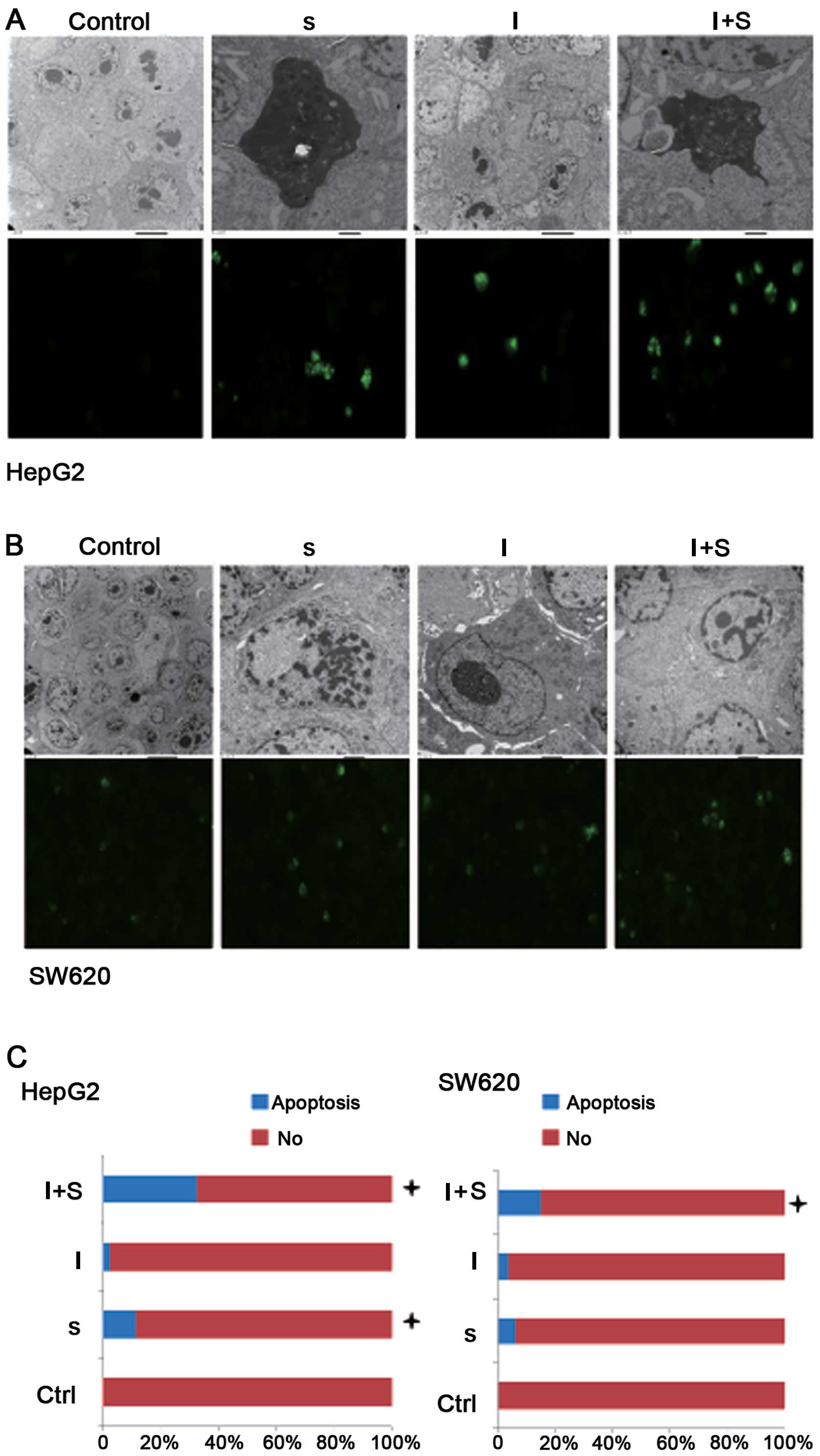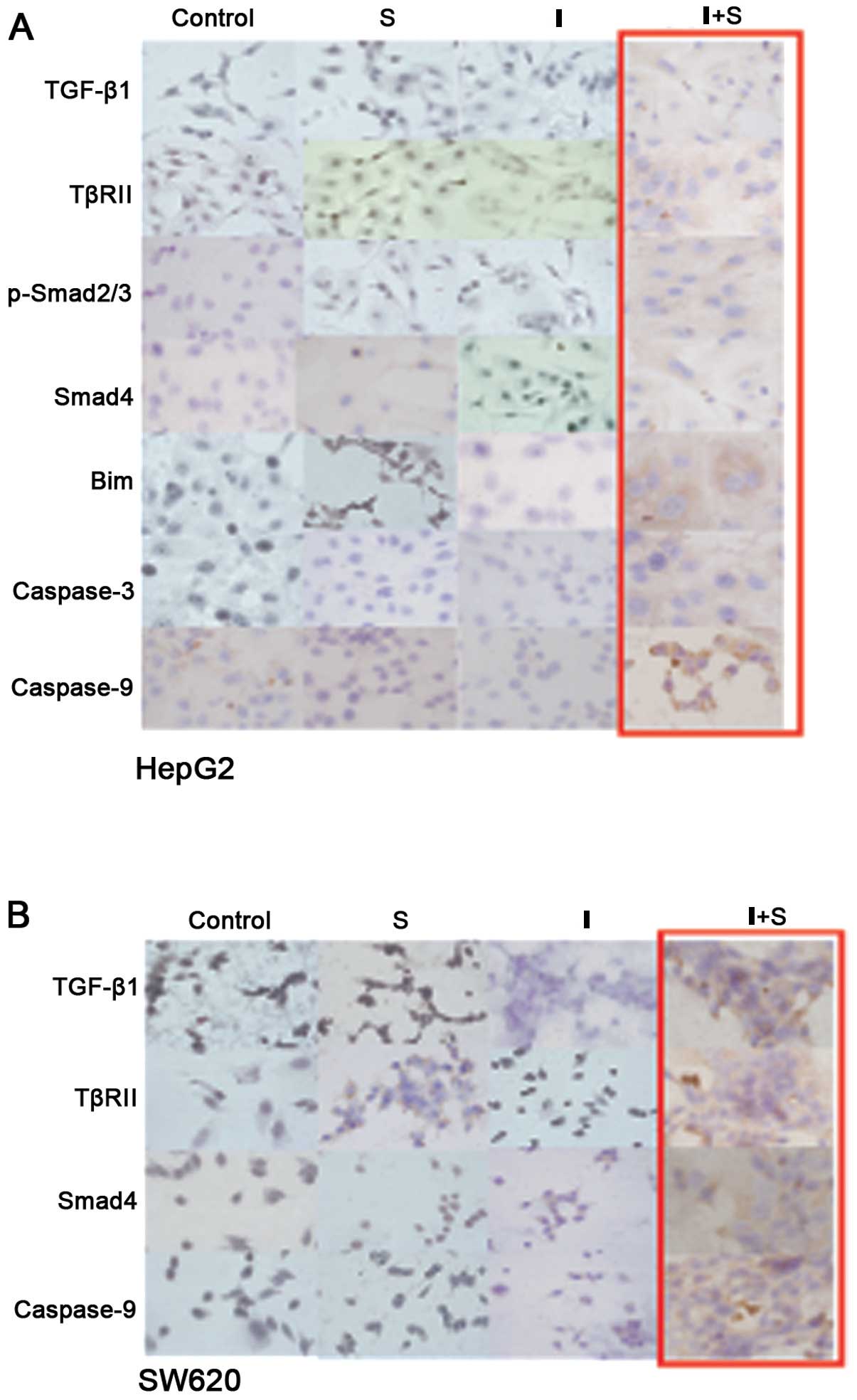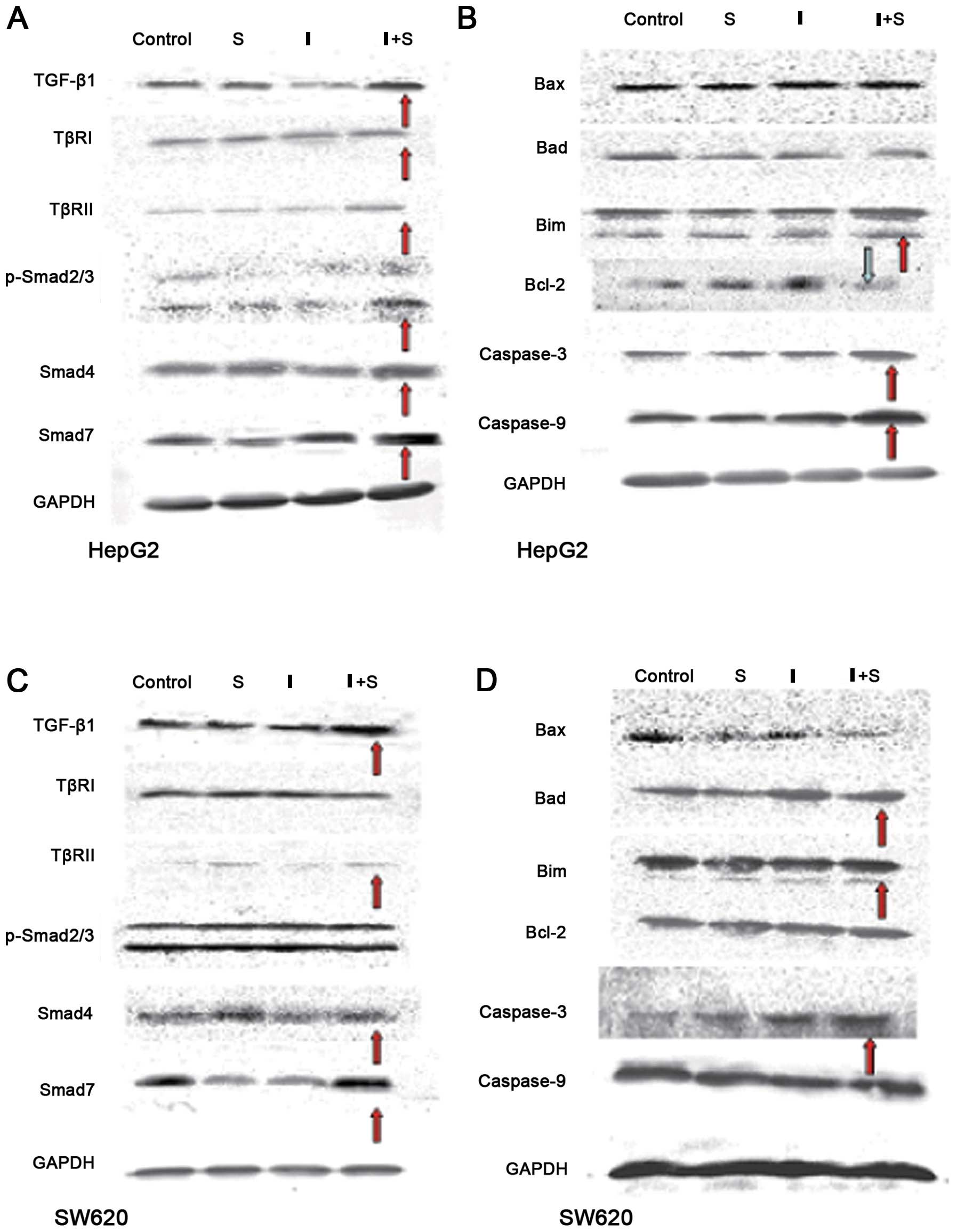|
1
|
Hu H, Zhang XP, Wang YL, et al:
Identification of a novel function of Id-1 in mediating the
anticancer responses of SAMC, a water-soluble garlic derivative, in
human bladder cancer cells. Mol Med Rep. 4:9–16. 2011.PubMed/NCBI
|
|
2
|
Lee Y: Induction of apoptosis by
S-allylmercapto-L-cysteine, a biotransformed garlic derivative, on
a human gastric cancer cell line. Int J Mol Med. 21:765–770.
2008.PubMed/NCBI
|
|
3
|
Pinto JT, Lapsia S, Shah A, Santiago H and
Kim G: Antiproliferative effects of garlic-derived and other allium
related compounds. Adv Exp Med Biol. 492:83–106. 2001. View Article : Google Scholar : PubMed/NCBI
|
|
4
|
Shirin H, Pinto JT, Kawabata Y, et al:
Antiproliferative effects of S-allylmercaptocysteine on colon
cancer cells when tested alone or in combination with sulindac
sulfide. Cancer Res. 61:725–731. 2001.PubMed/NCBI
|
|
5
|
Wu X, Kassie F and Mersch-Sundermann V:
Induction of apoptosis in tumor cells by naturally occurring
sulfur-containing compounds. Mutat Res. 589:81–102. 2005.
View Article : Google Scholar : PubMed/NCBI
|
|
6
|
Xiao D, Pinto JT, Gundersen GG and
Weinstein IB: Effects of a series of organosulfur compounds on
mitotic arrest and induction of apoptosis in colon cancer cells.
Mol Cancer Ther. 4:1388–1398. 2005. View Article : Google Scholar : PubMed/NCBI
|
|
7
|
Malki A, El-Saadani M and Sultan AS:
Garlic constituent diallyl trisulfide induced apoptosis in MCF7
human breast cancer cells. Cancer Biol Ther. 8:2175–2185. 2009.
View Article : Google Scholar : PubMed/NCBI
|
|
8
|
Wu XJ, Hu Y, Lamy E and Mersch-Sundermann
V: Apoptosis induction in human lung adenocarcinoma cells by
oil-soluble allyl sulfides: triggers, pathways, and modulators.
Environ Mol Mutagen. 50:266–275. 2009. View
Article : Google Scholar : PubMed/NCBI
|
|
9
|
Zhang W, Ha M, Gong Y, Xu Y, Dong N and
Yuan Y: Allicin induces apoptosis in gastric cancer cells through
activation of both extrinsic and intrinsic pathways. Oncol Rep.
24:1585–1592. 2010.PubMed/NCBI
|
|
10
|
Xiao D, Pinto JT, Soh JW, et al: Induction
of apoptosis by the garlic-derived compound S-allylmercaptocysteine
(SAMC) is associated with microtubule depolymerization and c-Jun
NH(2)-terminal kinase 1 activation. Cancer Res. 63:6825–6837.
2003.PubMed/NCBI
|
|
11
|
Chen C, Pung D, Leong V, et al: Induction
of detoxifying enzymes by garlic organosulfur compounds through
transcription factor Nrf2: effect of chemical structure and stress
signals. Free Radic Biol Med. 37:1578–1590. 2004. View Article : Google Scholar : PubMed/NCBI
|
|
12
|
Bennett BL, Sasaki DT, Murray BW, et al:
SP600125, an anthrapyrazolone inhibitor of Jun N-terminal kinase.
Proc Natl Acad Sci USA. 98:13681–13686. 2001. View Article : Google Scholar : PubMed/NCBI
|
|
13
|
Wen J, Zhang Y, Chen X, Shen L, Li GC and
Xu M: Enhancement of diallyl disulfide-induced apoptosis by
inhibitors of MAPKs in human HepG2 hepatoma cells. Biochem
Pharmacol. 68:323–331. 2004. View Article : Google Scholar : PubMed/NCBI
|
|
14
|
Xia HH, He H, De Wang J, et al: Induction
of apoptosis and cell cycle arrest by a specific c-Jun NH2-terminal
kinase (JNK) inhibitor, SP-600125, in gastrointestinal cancers.
Cancer Lett. 241:268–274. 2006. View Article : Google Scholar : PubMed/NCBI
|
|
15
|
Herzer K, Grosse-Wilde A, Krammer PH,
Galle PR and Kanzler S: Transforming growth factor-beta-mediated
tumor necrosis factor-related apoptosis-inducing ligand expression
and apoptosis in hepatoma cells requires functional cooperation
between Smad proteins and activator protein-1. Mol Cancer Res.
6:1169–1177. 2008. View Article : Google Scholar
|
|
16
|
Korchynskyi O, Landström M, Stoika R, et
al: Expression of Smad proteins in human colorectal cancer. Int J
Cancer. 82:197–202. 1999. View Article : Google Scholar : PubMed/NCBI
|
|
17
|
Perlman R, Schiemann WP, Brooks MW, Lodish
HF and Weinberg RA: TGF-beta-induced apoptosis is mediated by the
adapter protein Daxx that facilitates JNK activation. Nat Cell
Biol. 3:708–714. 2001. View
Article : Google Scholar : PubMed/NCBI
|
|
18
|
Teraoka H, Sawada T, Yamashita Y, et al:
TGF-beta1 promotes liver metastasis of pancreatic cancer by
modulating the capacity of cellular invasion. Int J Oncol.
19:709–715. 2001.
|
|
19
|
Wildey GM, Patil S and Howe PH: Smad3
potentiates transforming growth factor beta (TGFbeta)-induced
apoptosis and expression of the BH3-only protein Bim in WEHI 231 B
lymphocytes. J Biol Chem. 278:18069–18077. 2003. View Article : Google Scholar : PubMed/NCBI
|
|
20
|
Yang YA, Zhang GM, Feigenbaum L and Zhang
YE: Smad3 reduces susceptibility to hepatocarcinoma by sensitizing
hepatocytes to apoptosis through downregulation of Bcl-2. Cancer
Cell. 9:445–457. 2006. View Article : Google Scholar : PubMed/NCBI
|
|
21
|
Yu J, Zhang L, Chen A, et al:
Identification of the gene transcription and apoptosis mediated by
TGF-beta-Smad2/3-Smad4 signaling. J Cell Physiol. 215:422–433.
2008. View Article : Google Scholar : PubMed/NCBI
|
|
22
|
Chapnick DA, Warner L, Bernet J, Rao T and
Liu X: Partners in crime: the TGFβ and MAPK pathways in cancer
progression. Cell Biosci. 1:422011.PubMed/NCBI
|
|
23
|
Javelaud D and Mauviel A: Crosstalk
mechanisms between the mitogen-activated protein kinase pathways
and Smad signaling downstream of TGF-beta: implications for
carcinogenesis. Oncogene. 24:5742–5750. 2005. View Article : Google Scholar : PubMed/NCBI
|
|
24
|
Ijichi H, Ikenoue T, Kato N, et al:
Systematic analysis of the TGF-beta-Smad signaling pathway in
gastrointestinal cancer cells. Biochem Biophys Res Commun.
289:350–357. 2001. View Article : Google Scholar : PubMed/NCBI
|
|
25
|
Caja L, Sancho P, Bertran E,
Iglesias-Serret D, Gil J and Fabregat I: Overactivation of the
MEK/ERK pathway in liver tumor cells confers resistance to
TGF-{beta}-induced cell death through impairing up-regulation of
the NADPH oxidase NOX4. Cancer Res. 69:7595–7602. 2009. View Article : Google Scholar : PubMed/NCBI
|
|
26
|
Harada K, Kawaguchi S, Supriatno,
Kawashima Y, Yoshida H and Sato M: S-1, an oral fluoropyrimidine
anti-cancer agent, enhanced radiosensitivity in a human oral cancer
cell line in vivo and in vitro: involvement possibility of
inhibition of survival signal, Akt/PKB. Cancer Lett. 226:161–168.
2005. View Article : Google Scholar : PubMed/NCBI
|
|
27
|
Chu Q, Lee DT, Tsao SW, Wang X and Wong
YC: S-allylcysteine, a water-soluble garlic derivative, suppresses
the growth of a human androgen-independent prostate cancer
xenograft, CWR22R, under in vivo conditions. BJU Int. 99:925–932.
2007. View Article : Google Scholar
|
|
28
|
Howard EW, Lee DT, Chiu YT, Chua CW, Wang
X and Wong YC: Evidence of a novel docetaxel sensitizer,
garlic-derived S-allylmercaptocysteine, as a treatment option for
hormone refractory prostate cancer. Int J Cancer. 122:1941–1948.
2008. View Article : Google Scholar
|
|
29
|
Liang D, Qin Y, Zhao W, et al:
S-allylmercaptocysteine effectively inhibits the proliferation of
colorectal cancer cells under in vitro and in vivo conditions.
Cancer Lett. 310:69–76. 2011. View Article : Google Scholar : PubMed/NCBI
|
|
30
|
Guo X and Wang XF: Signaling cross-talk
between TGF-beta/BMP and other pathways. Cell Res. 19:71–88. 2009.
View Article : Google Scholar : PubMed/NCBI
|
|
31
|
Xu J, Lamouille S and Derynck R:
TGF-beta-induced epithelial to mesenchymal transition. Cell Res.
19:156–172. 2009. View Article : Google Scholar : PubMed/NCBI
|
|
32
|
Tong JL, Nie F, Ran ZH, et al:
Epigallocatechin gallate induces apoptosis in human hepatocellular
carcinoma HepG2 cells via TGF/Smad signaling pathway. Zhonghua
Zhong Liu Za Zhi. 31:646–650. 2009.(In Chinese).
|
|
33
|
Wang L, Hu GY, Shen H, Peng ZZ, Ning WB
and Tao LJ: Fluorofenidone inhibits TGF-beta1 induced CTGF via MAPK
pathways in mouse mesangial cells. Pharmazie. 64:680–684.
2009.PubMed/NCBI
|
|
34
|
Miyaki M, Iijima T, Konishi M, et al:
Higher frequency of Smad4 gene mutation in human colorectal cancer
with distant metastasis. Oncogene. 18:3098–3103. 1999. View Article : Google Scholar : PubMed/NCBI
|
|
35
|
Miyazono K, ten Dijke P and Heldin CH:
TGF-beta signaling by Smad proteins. Adv Immunol. 75:115–157. 2000.
View Article : Google Scholar : PubMed/NCBI
|
|
36
|
Rahimi RA and Leof EB: TGF-beta signaling:
a tale of two responses. J Cell Biochem. 102:593–608. 2007.
View Article : Google Scholar : PubMed/NCBI
|
|
37
|
Shi Y and Massagué J: Mechanisms of
TGF-beta signaling from cell membrane to the nucleus. Cell.
113:685–700. 2003. View Article : Google Scholar : PubMed/NCBI
|
|
38
|
Derynck R and Zhang YE: Smad-dependent and
Smad-independent pathways in TGF-beta family signalling. Nature.
425:577–584. 2003. View Article : Google Scholar : PubMed/NCBI
|
|
39
|
Lutz M and Knaus P: Integration of the
TGF-beta pathway into the cellular signalling network. Cell Signal.
14:977–988. 2002. View Article : Google Scholar : PubMed/NCBI
|
|
40
|
Massagué J and Chen YG: Controlling
TGF-beta signaling. Genes Dev. 14:627–644. 2000.PubMed/NCBI
|
|
41
|
Patil S, Wildey GM, Brown TL, Choy L,
Derynck R and Howe PH: Smad7 is induced by CD40 and protects WEHI
231 B-lymphocytes from transforming growth factor-beta -induced
growth inhibition and apoptosis. J Biol Chem. 275:38363–38370.
2000. View Article : Google Scholar : PubMed/NCBI
|
|
42
|
Yamamura Y, Hua X, Bergelson S and Lodish
HF: Critical role of Smads and AP-1 complex in transforming growth
factor-beta-dependent apoptosis. J Biol Chem. 275:36295–36302.
2000. View Article : Google Scholar : PubMed/NCBI
|
|
43
|
Landström M, Heldin NE, Bu S, et al: Smad7
mediates apoptosis induced by transforming growth factor beta in
prostatic carcinoma cells. Curr Biol. 10:535–538. 2000.PubMed/NCBI
|
|
44
|
Mazars A, Lallemand F, Prunier C, et al:
Evidence for a role of the JNK cascade in Smad7-mediated apoptosis.
J Biol Chem. 276:36797–36803. 2001. View Article : Google Scholar : PubMed/NCBI
|
|
45
|
Hoshino Y, Katsuno Y, Ehata S and Miyazono
K: Autocrine TGF-beta protects breast cancer cells from apoptosis
through reduction of BH3-only protein, Bim. J Biochem. 149:55–65.
2011. View Article : Google Scholar
|
|
46
|
Samanta D, Gonzalez AL, Nagathihalli N, Ye
F, Carbone DP and Datta PK: Smoking attenuates transforming growth
factor-beta-mediated tumor suppression function through
downregulation of Smad3 in lung cancer. Cancer Prev Res. 5:453–463.
2012. View Article : Google Scholar : PubMed/NCBI
|
|
47
|
Houde N, Chamoux E, Bisson M and Roux S:
Transforming growth factor-beta1 (TGF-beta1) induces human
osteoclast apoptosis by up-regulating Bim. J Biol Chem.
284:23397–23404. 2009. View Article : Google Scholar : PubMed/NCBI
|
|
48
|
Ohgushi M, Kuroki S, Fukamachi H, et al:
Transforming growth factor beta-dependent sequential activation of
Smad, Bim, and caspase-9 mediates physiological apoptosis in
gastric epithelial cells. Mol Cell Biol. 25:10017–10028. 2005.
View Article : Google Scholar
|
|
49
|
O’Reilly LA, Cullen L, Visvader J, et al:
The proapoptotic BH3-only protein bim is expressed in
hematopoietic, epithelial, neuronal, and germ cells. Am J Pathol.
157:449–461. 2000.PubMed/NCBI
|
|
50
|
Park WS, Cho YG, Kim CJ, et al:
Hypermethylation of the RUNX3 gene in hepatocellular carcinoma. Exp
Mol Med. 37:276–281. 2005. View Article : Google Scholar : PubMed/NCBI
|


















